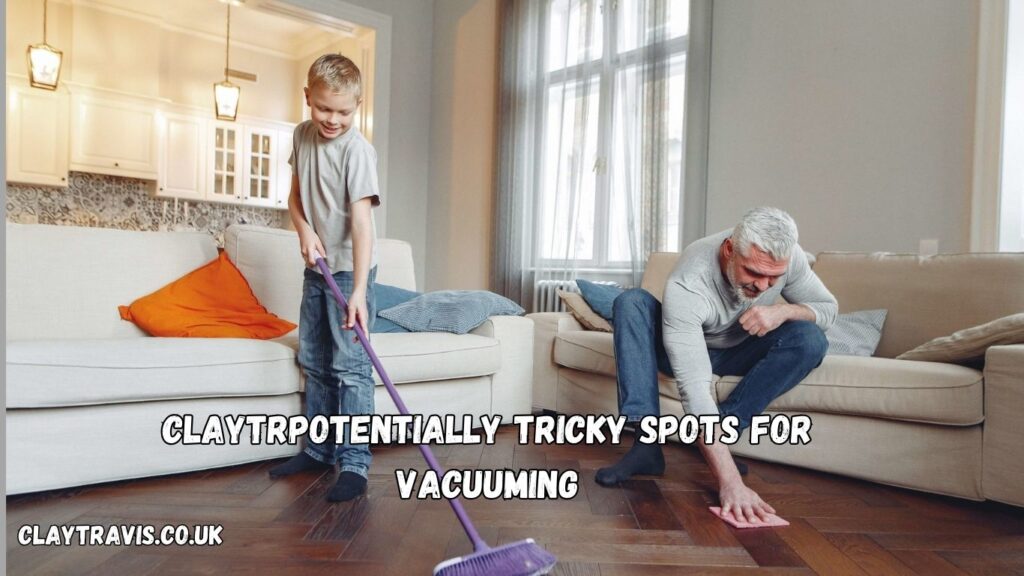Discover expert tips and tricks for cleaning those potentially tricky spots for vacuuming. Learn how to reach hidden dirt in corners, under furniture, and more with ease.
When it comes to maintaining a clean and healthy home, vacuuming plays an essential role. However, there are areas in every home that can challenge even the most determined cleaner. These potentially tricky spots for vacuuming often accumulate dust, allergens, and debris, creating hidden messes that are easy to overlook. In this blog, we’ll explore the most challenging spots, why they are problematic, and how to effectively tackle them using proper techniques, tools, and strategies
Table of Contents
Why Tricky Spots Matter
Failing to clean certain areas can lead to more than just an unsightly home. Dust buildup in hard-to-reach areas can trigger allergies, harbor dust mites, and even attract pests. By identifying and addressing these potentially tricky spots for vacuuming, you improve indoor air quality, enhance the lifespan of furniture and carpets, and create a healthier living environment.
The Most Challenging Spots in Your Home
1. Corners and Baseboards
Corners and baseboards often become dust magnets due to their proximity to the floor. These areas can trap pet hair, dirt, and cobwebs.
Solution:
- Use a crevice tool attachment on your vacuum cleaner to target these tight spaces.
- A brush attachment can loosen stuck-on dirt along baseboards.
- Incorporate a microfiber cloth for a finishing touch.
2. Under Heavy Furniture
Areas beneath sofas, beds, and cabinets tend to be neglected because moving furniture can be a hassle. These spaces are prime hiding spots for dust and allergens.
Solution:
- Invest in a vacuum cleaner with a low-profile head or an extendable wand.
- Use furniture sliders to easily move heavy pieces and access the areas beneath them.
Anecdote:
“I once moved my sofa after a year and found a small collection of missing socks and a thick layer of dust. Investing in a vacuum extension saved me hours of effort the next time around!”
3. Carpeted Stairs
Vacuuming stairs is physically demanding and can often lead to missed spots, especially along the edges.
Solution:
- Use a handheld vacuum or a stair-specific attachment with a brush roller.
- Work from top to bottom, ensuring you overlap strokes for thorough coverage.
4. Ceiling Fans and Light Fixtures
Dust on ceiling fans often goes unnoticed until it starts falling onto furniture. Similarly, light fixtures collect grime that can dull their brightness.
Solution:
- Use a telescopic duster or a vacuum with a long hose attachment.
- Regularly clean these areas to prevent thick buildup.
5. Behind Appliances
The space behind refrigerators, ovens, and washers is often forgotten, allowing grease and lint to accumulate.
Solution:
- Pull appliances out periodically to vacuum behind them.
- Use a vacuum with a slim nozzle to reach tight spots without moving heavy appliances.
Tools You Need for Effective Cleaning
The right tools make all the difference when tackling potentially tricky spots for vacuuming:
- Crevice Tools: For tight spaces like corners and vents.
- Brush Attachments: Perfect for baseboards and upholstery.
- Telescopic Wands: Ideal for ceiling fans and high shelves.
- Low-Profile Heads: To reach under furniture easily.
- Handheld Vacuums: Lightweight and maneuverable for stairs.
Pro Tips for Mastering Vacuuming Techniques
- Establish a Routine: Regular cleaning prevents buildup in hard-to-reach areas.
- Work from Top to Bottom: Always start high (e.g., ceiling fans) and finish with floors.
- Use the Right Suction Settings: Adjust suction for carpets, hardwood, and delicate surfaces.
- Clean Attachments Frequently: Dusty tools can redistribute dirt rather than remove it.
- Move Methodically: Overlap vacuum passes to ensure no area is missed.
The Role of Regular Maintenance
Regular vacuum maintenance ensures optimal performance. Here’s how to keep your vacuum in top shape:
- Empty the dustbin or replace bags when full.
- Clean or replace filters to maintain strong suction.
- Check hoses and attachments for blockages.
- Inspect brush rollers for tangled hair or debris.
FAQs
1. How often should I vacuum tricky spots like under furniture or behind appliances?
Vacuum these areas every 1–3 months, depending on foot traffic and household dust levels.
2. What’s the best way to clean carpeted stairs without a specialized vacuum?
Use a handheld vacuum with a brush attachment or a regular vacuum with a hose extension.
3. Are robotic vacuums effective for hard-to-reach spots?
While robotic vacuums can navigate under furniture, they often struggle with corners and stairs. Combine them with manual cleaning for best results.
4. Can I use a regular vacuum for ceiling fans and light fixtures?
Yes, but you’ll need a long hose attachment or telescopic wand to reach those high areas safely.
5. What are the health risks of neglecting tricky spots?
Dust buildup can trigger allergies, asthma, and respiratory issues. Regular cleaning reduces these risks significantly.
